Guitar pedals are small electronic devices designed to add specific effects (drive, filter, pitch-alter, etc.) to your electric guitar’s sound. They typically come in a small, compact box that sits on the floor and connects to your guitar and amplifier via cables. These little boxes can completely transform the sound of your electric guitar, taking it from plain and ordinary to a unique and powerful masterpiece. How do guitar pedals work? In this post, we’ll explore everything about how do guitar pedals work, break down the functions and how you can easily use a pedal on your electric or bass. Let’s get started.
How Do Guitar Pedals Work?
When you play a note on your electric guitar, the pickups detect the vibration and convert it into an electrical signal. This signal then travels through your cables and into your amplifier, amplified and sent through your speakers. But, when you use a pedal into this signal chain, the sound is modified in various ways. For instance, a distortion pedal will add an overdriven sound to your clean guitar signal, while a delay pedal will create an echo effect. Each pedal has unique characteristics and sounds, and they work by manipulating the electrical signal from your guitar.
See Also: 7 Best Sustain Pedal For Guitar
Now, let’s break down some of the important things so that you can understand how do guitar pedals work.
Inputs and Outputs:
Most pedals will have at least one input and output jack. The input jack is where you plug in your guitar, and the output jack is where you plug in your amplifier. Some pedals might have multiple inputs and outputs for more complex setups.
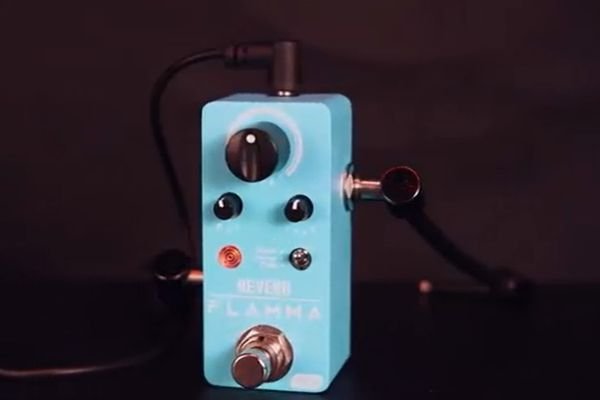
On/Off:
The trusty on/off footswitch; one of the most common features you’ll find on a guitar pedal. It’s usually located on the top of the pedal, allowing you to turn the effect on and off with your foot. Some pedals might even have additional footswitches for controlling different functions or settings. I mean, it’s pretty straightforward, but it’s definitely a noteworthy addition.
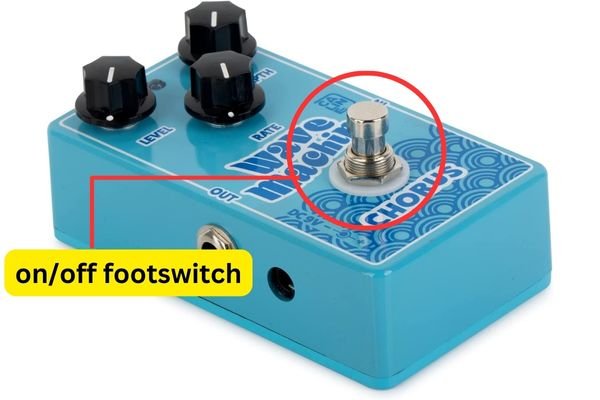
Controls:
Most guitar pedals will have various controls (knobs, switches, buttons, sliders, and more) to adjust the effect. The type of control depends on pedal and the effect it produces. Some pedals have additional features like expressions (volume, modulation, delay level, etc.) or presets.
Power Options:
Just like any other electric accessory, pedals require some form of power to function like batteries or an external power supply. Some pedals are able to run on both.
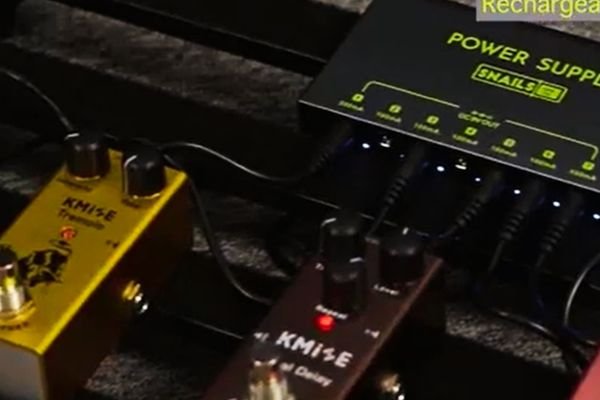
True-Bypass Vs. Buffered Bypass:
Some people swear by true-bypass pedals, while others prefer buffered bypass pedals. A true-bypass pedal is a pedal that completely disconnects the circuit when the effect is not in use. In contrast, buffered bypass pedals use a buffer circuit to maintain a consistent signal level throughout the pedal chain when it’s not in use. Some guitarists prefer true-bypass pedals because they believe it gives them a purer signal, while others prefer buffered bypass pedals because they can help maintain the signal’s integrity.
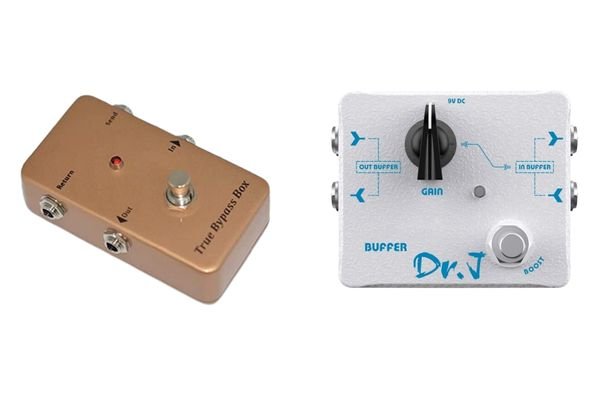
Analog Vs. Digital:
Analog pedals use physical components, while digital pedals use microprocessors. Analog pedals are typically more sought after by guitar purists because they can add warmth and character to the signal. In compared to analog pedals, digital pedals can provide a wider range of effects and sounds. Some guitarists might prefer analog pedals’ more vintage, organic sound, while others might prefer the versatility and precision of digital pedals.
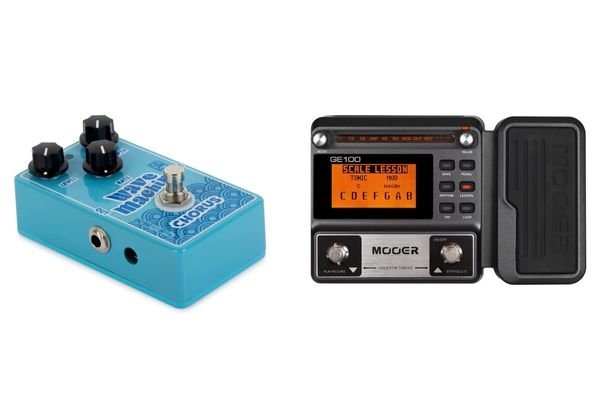
A Note on Signal Flow:
Lastly, let’s talk about signal flow. The order in which you place your pedals in the signal chain can greatly affect how they interact with each other and the overall sound. The general rule of thumb is to place your gain-based pedals at the beginning of the chain, followed by modulation-based pedals and then time-based pedals. However, this can vary depending on your specific setup and the sounds you’re trying to achieve.
How To Use Guitar Pedals?
First things first, plug it in between your guitar and amplifier. Usually, this involves using a patch cable to connect the input of the pedal to the output of your guitar and another patch cable to connect the output of the pedal to the input of your amp.
Once your pedal is set up, experiment with different settings to achieve the desired effect. It’ll vary depending on the type of pedal you’re using. For example, if you’re using a distortion pedal, you’ll want to adjust the gain and tone controls to get the level of distortion that you want. If you’re using a delay pedal, you’ll want to adjust the delay time and feedback settings to get the right echo level.
After that, consider the order in which you connect your pedals. As a general rule, it’s a good idea to put distortion pedals first in the chain, followed by modulation pedals (like chorus or flanger), and then time-based effects (like delay or reverb). However, there are no hard and fast rules here, so feel free to experiment and see what works best for you.
Finally, remember that less is often more when using guitar pedals. It can be tempting to go overboard by adding loads of effects, but this can lead to a cluttered and indistinct sound. Instead, try to focus on using just a few pedals that really enhance your playing and help you achieve the sound you’re trying to achieve.
Do Guitar Pedals Work On Bass?
Guitar pedals can be used on bass. In fact, many bassists use guitar pedals in their setups to have different effects. There are a number of guitar pedals that work particularly well with bass, such as compressors, overdrive, distortion, fuzz, chorus, and octave pedals. These pedals can help to shape your sound and create new sonic landscapes to explore.
However, some pedals may not be optimized for the lower frequencies of the bass guitar. So, you may need to tweak the settings or experiment with different combinations to achieve the best sound possible.
How Do Guitar Pedals Work: Final Words
Whether you’re looking to add some grit and distortion to your tone or create atmospheric soundscapes, there’s a pedal out there for you. Understanding the different types of pedals and how they function can help you achieve amazing sound. From overdrive to fuzz, modulation to pitch shifting, each type of pedal can add a unique layer to your tone. The real excitement of guitar pedals is in the experimentation to reach new heights.

